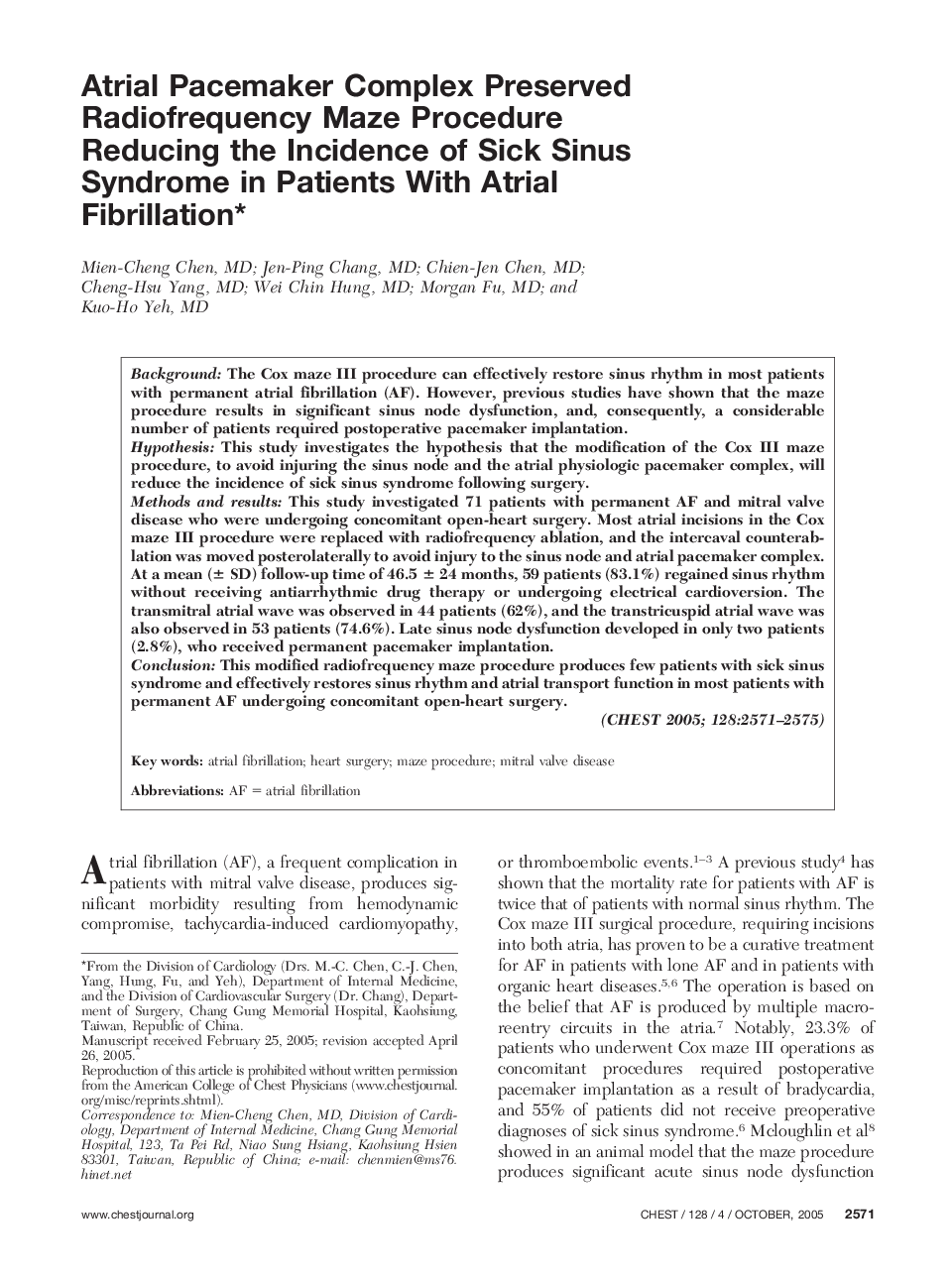| Article ID | Journal | Published Year | Pages | File Type |
|---|---|---|---|---|
| 2907151 | Chest | 2005 | 5 Pages |
BackgroundThe Cox maze III procedure can effectively restore sinus rhythm in most patients with permanent atrial fibrillation (AF). However, previous studies have shown that the maze procedure results in significant sinus node dysfunction, and, consequently, a considerable number of patients required postoperative pacemaker implantation.HypothesisThis study investigates the hypothesis that the modification of the Cox III maze procedure, to avoid injuring the sinus node and the atrial physiologic pacemaker complex, will reduce the incidence of sick sinus syndrome following surgery.Methods and resultsThis study investigated 71 patients with permanent AF and mitral valve disease who were undergoing concomitant open-heart surgery. Most atrial incisions in the Cox maze III procedure were replaced with radiofrequency ablation, and the intercaval counterablation was moved posterolaterally to avoid injury to the sinus node and atrial pacemaker complex. At a mean (± SD) follow-up time of 46.5 ± 24 months, 59 patients (83.1%) regained sinus rhythm without receiving antiarrhythmic drug therapy or undergoing electrical cardioversion. The transmitral atrial wave was observed in 44 patients (62%), and the transtricuspid atrial wave was also observed in 53 patients (74.6%). Late sinus node dysfunction developed in only two patients (2.8%), who received permanent pacemaker implantation.ConclusionThis modified radiofrequency maze procedure produces few patients with sick sinus syndrome and effectively restores sinus rhythm and atrial transport function in most patients with permanent AF undergoing concomitant open-heart surgery.
